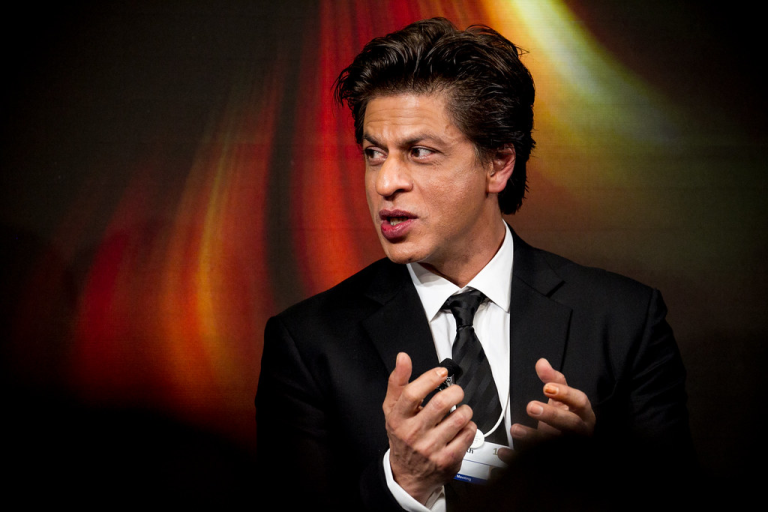
New York, N.Y. Speaking broadly, we don’t appreciate Bollywood because we don’t understand it. We fail to grasp it not for any intellectual flaw, but for a major cultural one: we didn’t grow up in India. The biggest point to absorb to better get Bollywood is that Indian cinema is both sophisticated and unique. Films began to be made in India in the 1890’s, at the same time as film was being created in France.

Indian glamour: Actor Zoran Saher, Sneha Shah, and Kawas Bhasin. Photo: Kabir Chopra.
Bollywood has a bad rap in the U.S., known mostly for exaggerated song and dance. It is so much more, I have learned. Indian films are a once-in-a-lifetime experience. It is an integral part of Indian life. It has been described as a cinema that heals. It is also the largest film industry in the world.
In the past I have interviewed Indian film personalities actor Shah Rukh Khan and directors Mira Nair and Mani Ratnam, as well as reviewed specific Indian films such as Chittagong.
Indian director Anuraadha Tewari with actor Anand Kumar. Photo: Kabir Chopra.
Indian film is based on an iconography deeply rooted in the Indian soil with Hindu, Muslim, Buddhist and Christian references. Indian film is often a melodrama wrapped in joy and hope – celebrating the positivity of life. If an actor appears with a peacock feather, the Indian viewer understands a connection to Vishnu. With a snake around his neck, the native viewer thinks of Shiva. Such visual images and references are understood by Indian audiences.
Zoya Akhtar, Ajay Shrivastav, and Kiren Shrivastav. Photo: Kabir Chopra.
Last fall attended a wonderful two-day educational conference in New York titled Ticket2Bollywood (T2B), sponsored by Molecule Communications. The theme was ‘Bollywood: Beyond the Song and Dance.’ The event featured some of the most successful Indian filmmakers in the business
The roster of powerhouse Bollywood “household” names included:
Madhur Bhandarkar. National Award-winner for Best Director for and director of National Award-winning movies Chandni Bar (Tabu), Page 3, and Fashion (Priyanka Chopra). Bhandarkar has also released the most-awaited movie of the year, Heroine (Kareena Kapoor, Arjun Rampal).
Imtiaz Ali. Nominated for Best Director for recent super hit Rockstar (Ranbir Kapoor) and 2007’s Jab We Met (Shahid Kapur & Kareena Kapoor). Imtiaz also directed Love Aaj Kal and Socha Na Tha. Most recently, Imtiaz wrote the script for Cocktail (Saif Ali Khan, Deepika Padukone).
Zoya Akhtar. FilmFare Award for Best Director for Zindagi Na Milege Dobara (Hrithik Roshan, Farhan Akhtar, Katrina Kaif). Also directed Luck by Chance (Konkana Sen Sharma) and writer of soon-to-be-released Taalash (Aamir Khan, Rani Mukherjee, and Kareena Kapoor). Zoya posited this thought: “Why do certain Indian films not work here in the U.S.? For me, this is very interesting to ponder.”
Anuraadha Tewari. Gold Medalist for Direction from Jamia Millia Islamia, New Delhi, and scriptwriter of Fashion, Jail, and the more recent Heroine.
At event press-conference: Imtiaz Ali, Anuraadha Tewari, Zoya Akhtar. Photo: Kabir Chopra.
“At a time in our film history when Bollywood and Indian independent movies are in the international media spotlight, whether it is at Cannes, Sundance, or at the Oscars,” says Molecule Communications Director Ajay Shrivastav, “we want to educate anyone who is interested in Bollywood about what it takes to make a film a ‘hit.” He elaborated:
Our films have gone beyond the Bollywood that portrayed couples ‘fake’ kissing surreptitiously behind trees or having arranged marriages because they had no choice. This young crop of directors and writers is capturing the ‘truest’ sense of what it means to grow up Indian in a global world, and we are thrilled to be presenting all of them together for the first time in the United States during the 100th year of Indian cinema.
My own growing appreciation for Bollywood is in direct proportion to my understanding. Many of my Asian friends don’t get why I laugh listening to Jeff Foxworthy’s Blue Collar Comedy Tour. Sure, Bollywood has its share of exaggerated song and dance. ‘Redneck’ humor can be as homophobic and misogynist as Rap. But all are so much more.
I have enjoyed getting to know Shah Rukh Khan, Mira Nair and Mani Ratnam here in the U.S. and look forward to being in India again to learn even more about Indian cinema – and especially Bollywood. To try to better appreciate the rich iconography deeply rooted in the Indian soil. Luckily, as I will never be Indian, Bollywood continues to become more global.
Originally published in Daily Kos, May 13, 2013.